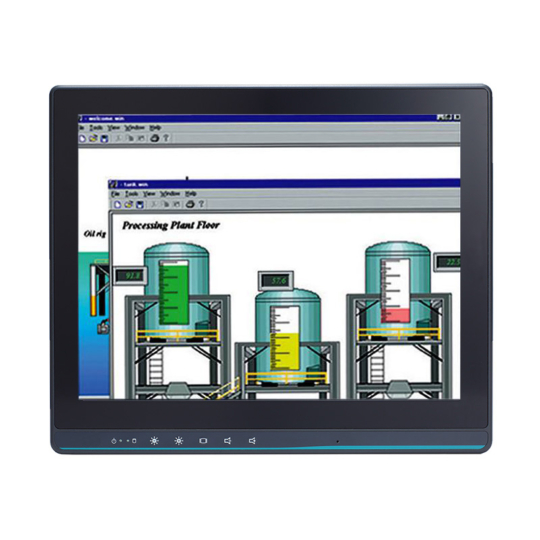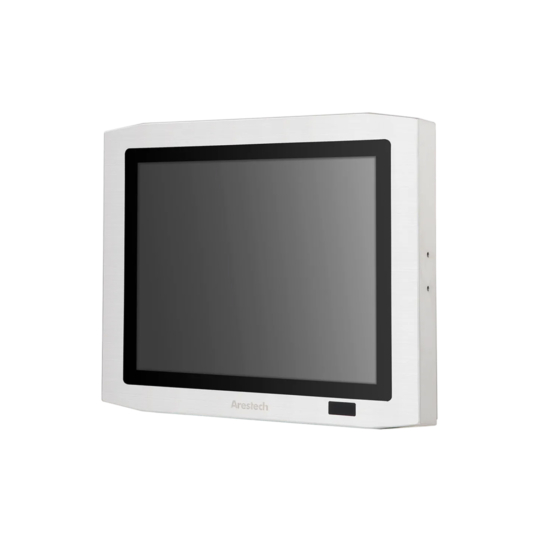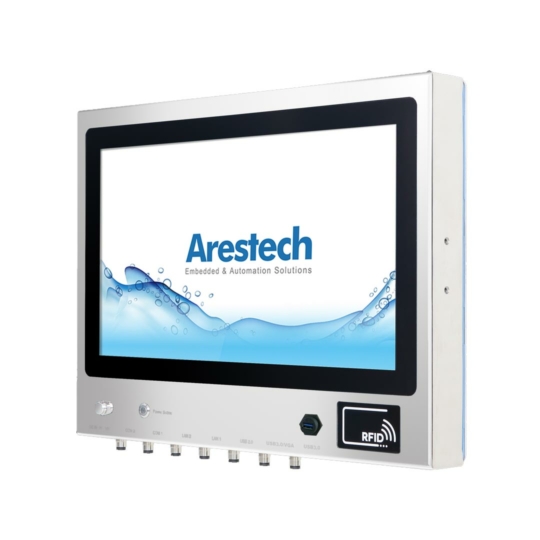Choosing an Industrial HMI - Panel PCs, Touch Displays and Rugged Tablets
Edge computing and industrial IoT applications are transforming monitoring and control equipment to be more efficient, integrate new technologies and withstand harsh environments. In this article we are going to look at what an industrial HMI is, what your options for monitor and control are, and key specifications to look for in your next HMI terminal.
Our series of pre-qualified industrial HMI panels are engineered for a wide range of industrial markets to meet the requirements of your particular application or engineering needs. Designed for easy integration into a complex machine build, deployment on a production floor, inside a vehicle, or wherever you need an intuitive user interface we likely have solutions that will operate as a long life solution, even in the most challenging environments. Speak with one of our solutions experts to review your requirements and recommend the ideal HMI for your application.
Industrial Displays, Panel Computers and Rugged Mobile Computing Platforms
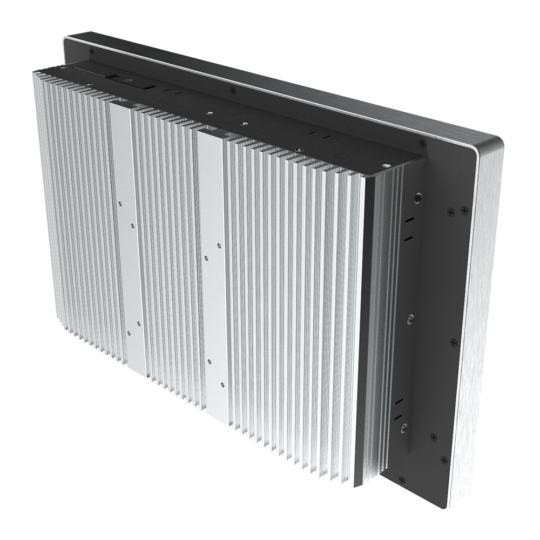
Wide Temperature Panel PCs
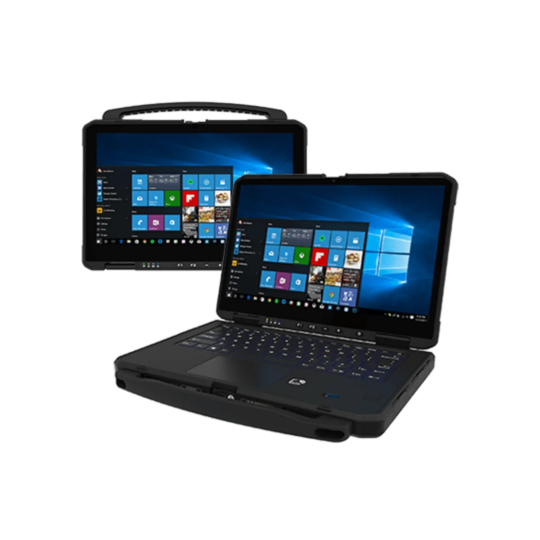
Rugged Tablets & Laptops
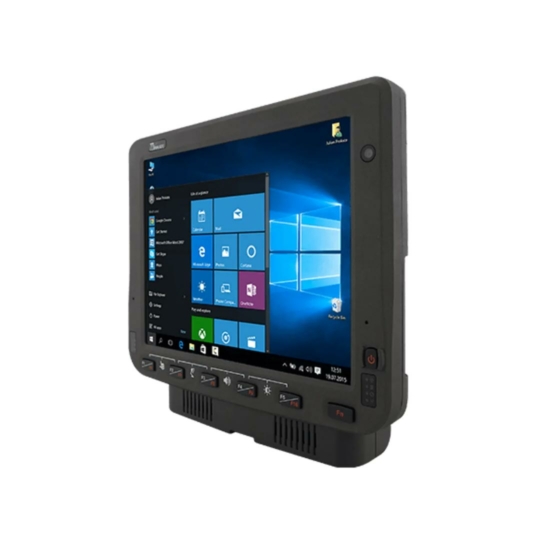
Vehicle Mounted HMIs
What is an industrial HMI?
The term HMI is the acronym for Human-Machine Interface and allows a user to interact either with a machine, system, or computer program via a touch display or all-in-one PC. Interaction typically takes place via specialist software programmed with a graphical user interface (GUI) for the task at hand, however, can also be used for interaction with the systems native operating software.
HMI technology is used by almost all industrial sectors to interact with their machines and optimize their industrial processes and the preferred method for monitor and control is dependent on user preference and application. If the requirement was to operate fixed machinery in a smart factory, a localized industrial monitor or Panel PC would be the preferred method of HMI. Displays can be connected to the plants control cabinets or have a PC integrated to make an all-in-one PC. If however the requirement was to inspect a vehicle, take pictures of any damage and upload the logs remotely a ultra rugged tablet with resistance to drops, shock and vibration would be the preferred HMI.
The general public, factory floor operators, system integrators, and engineers are the most common roles that require interaction with HMIs. Common applications where HMIs are installed include:
- Smart Factories
- Equipment/Machinery Monitoring
- Building Automation
- Self Serve Kiosks
- Warehousing
Not all HMIs are designed and manufactured the same. A standard all-in-one PC with an onboard fan might be fit for purpose being used 12 hours per day in the retail sector however it will not stand the rigours of many industrial applications controlling heavy machinery in a hot, humid and dusty environment. We are partnered with industry specialists all over the globe so whether you’re looking for large format kiosk touch displays with vandal protection or a waterproof computer fit for submersion we can recommend a solution capable of withstanding the environment it’s being deployed.
Industrial HMI Specifications to Consider
Whether your looking to implement an industrial display, panel computer or rugged tablet as your preferred HMI we have a wide range of specifications and certifications which should be considered before rolling a solution out in the field.
Recommended Display Sizes & Resolutions
The operator should thoroughly assess each use case for an HMI to ensure that the right solutions are chosen based on the application requirements. Often, operators wonder if the panel should have a small or big screen size and what is the best resolution required to show the graphic object details correctly.
Larger industrial displays provide programmers with better space to work with when creating graphics. Most operators would want as big a display size as possible, particularly if they need to choose touch links, but also if the application is view-only and they wish to monitor the display from a distance.
Recommended display resolutions for choosing your next HMI are VGA (640 x 480 pixels) for basic applications, SVGA (800 x 600 pixels) for standard applications and SXGA (1280 x 1024 pixels) or higher for high-end applications.
Fixed Install or Handheld Operation?
Our industrial displays and Panel PCs allow you to integrate your solution wherever you need an intuitive user interface. Popular among system integrators include our Open-Frame, Panel-Mount and Rack-Mount solutions whilst standard VESA mounts are opted for retrofitting factory environments. Specialist RAM mounts are preferred for vehicle HMI applications such as forklift operation.
One of the primary benefits to a tablet solution is mobility. Our range of rugged laptops and rugged tablets with versatile data capture functions and wireless or cellular connectivity are ideal for mobile HMI applications. A localized dock may be required to provide power and charge the device when not being operated by the user.
System Interfaces
Typically Ethernet, WiFi or Cellular will be required for connectivity and capabilities to upload/download data capture. Modern advances with PoE now allow industrial PoE displays and PoE Panel PCs to not only communicate via Ethernet but also carry system power, simplifying and reducing installation costs even in the most remote areas.
Serial interfaces may be required for connected with instruments, scanners, or barcode readers.
Ingress Protection, is Fanless or Waterproof Required?
Fanless HMIs provide thermal management in cooling without a traditional fan, reducing failure points and preventing the ingress of dirt and debris. Fanless Panel PCs typically involve strapping a heatsinked industrial PC to the back of an industrial monitor giving a further convenience of upgrading system performance without swapping out the display.
Waterproof HMIs are generally required for applications that require high standards of hygiene and cleanliness, such as for the manufacture of food and beverages. If panel-mounted the HMI can be simply IP65 from the front or if chassis mounted the ingress protection can be from all six sides. If requiring high pressure washdowns then an IP69K displays or IP69K panel PC will be required.
Operating Temperature, Going Beyond 0-50C
Ambient temperatures should be considered when deploying an HMI in the field. Most industrial displays, panel PCs and mobile tablets designed for factory automation have a 0 to 50 C operating temperature. Rugged HMIs designed for harsher environments outdoors would extend this operating temperature with a minimum specification of -25 to 70C. In extreme cases where temperature control is not an option wide temperature HMIs should be deployed, 40 to 80C is what’s known in the industry as extended operating temperatures.
By selecting onboard expansion with the appropriate temperature rated components, you’ll ensure your HMI will operate to its fullest potential with no points of failure when it comes to sub zero or extremely hot environments.
Cold start operating temperatures is the true ability for the HMI to not only continue operation in sub-zero temperatures but boot after being turned off for extended periods of time.
Certified HMIs for Defense, Marine, Rail, and Oil & Gas
Intrinsically safe HMIs meeting rigorous ATEX, IECEx and UL certifications keep you in control on exploration platforms, pipelines, and refineries.
Want to discuss the best HMI for your application?
Tell us what you're looking for and a member of our team will get right back to you.

